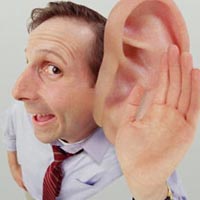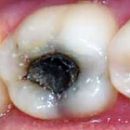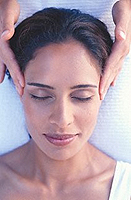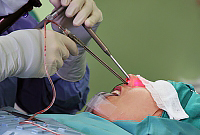Many people suffer from ridicule about the shape and sizes of their ears. Today, the problem of congenital evidence of the ear is solved with the help of cosmetic operations. Other replacement is widely used in medicine, it can be corrected with its help.
Content
The concept of backlasp
 How many people suffer from ridicule about the shape and sizes of their ears. Heavy complexes unfortunate owners of burrows are trying to hide under a long hairstyle, but if women are easy enough to do, then men are more and more difficult. The problem is not only that a sense of own damage is formed, sometimes a career and personal life are not as well as I would like.
How many people suffer from ridicule about the shape and sizes of their ears. Heavy complexes unfortunate owners of burrows are trying to hide under a long hairstyle, but if women are easy enough to do, then men are more and more difficult. The problem is not only that a sense of own damage is formed, sometimes a career and personal life are not as well as I would like.
Probably, the ear has always been a very significant part of the human body, especially female. This is what Renaissance wrote about the executed ears the Italian monk Agnoulo Firenzolo (1493-1543) in his work on the criteria of beauty: «Ears should be neither too small, nor too big, the outer edge must have a pleasant color of the seed of the pomegranate, and the ear should be pleasantly curved». Despite the ancient roots of the problem, it began to solve the surgical way relatively recently - 150 years ago.
During this time, plastic surgeons were able to develop numerous ways of correction of not only loproids, but also the forms of the ears, as well as the recovery of lost injury or absent from the birth of ear-sinks. Thus, the otoplasty can be divided into two options - aesthetic and reconstructive. Most often surgeons perform aesthetic operations. They are simple enough and short. The essence of most operations is to move and exchanging excessive cartilage, skin and fixing them in a new position.
Modern aesthetic criteria evaluate the proportions of the auricles more clearly: the upper point of attachment of the auricle is located at the level of the outer corner of the eye, the lower - approximately at the level of the tip of the nose. The average length of the ear shell of an adult is 6.5 cm, width - 3.5 cm, Length of the Middle - 1.5-2 cm. The angle between the plane of the auricle and the head in the norm is approximately 30°.
Indications and Contraindications for the operation
There are several indications for a surgical surgery about the restoration of the auricle:
- Lopowing
- Correction of other congenital deformities of ear-sinks
Correction of cup-shaped ears
- Restoration of the torn uhm
- Restoration of lost ear shell
The overwhelming majority of appeals to surgeons caused by any innate anomaly for the development of ear-sinks:
- Anatics - lack of ear shell
- Own sink rudiments (only umochka)
- microery (small, ingrown ear sink)
- Deformation of the Mety
- Curl deformation (pointed ear sink, angular)
- Lopowing
- Macrocations - an increase in all the ear shells or its parts
All congenital anomalies can be corrected surgical way and save the patient from painful suffering.
Contraindications to carry out operations are:
- Heavy Diseases of Internal Organs
- infectious diseases
- Disturbability of blood
Anesthesia and preoperative preparation for reference
Operation of otoplastics is carried out under local anesthesia or general anesthesia (intravenous anesthesia). Duration of operation 1-2 hours. The choice of the method of anesthesia depends on the selected surgeon of the rhinoplasty method.
In the preoperative period, the patient gives blood tests (common, for syphilis, hepatitis and HIV viruses). If the operation is carried out under anesthesia, the biochemical analysis of blood and urine is completed, ECG and fluorography are performed.
2 weeks before the operation, it is not desirable to take funds affecting blood intake (for example, aspirin, means against cough). When conducting general anesthesia, it is necessary to carry out per day «unloading» day (light food in small quantities), and in the morning there is nothing before the operation and do not drink. On the eve of the operation to wash the head.
Stages of burdow correction:
- Marking of fabrics to be excised
- local anesthesia
- Exciration of excess skin in the fold for the ear shell
- Moving and / or removing cartilage fragments
- fixation of cartilage in a new position
- cosmetic seams on the skin
- Overlay compression dressing
Stages of restoration of ear shell:
- Production and introduction of a cartilage frame in the skin pocket (from cartilage VI, VII or VIII edge)
- after 2 months - plastic ear uhi
- After 2 months - raising the ear shell (the formation of space behind the ear)
- After 6 weeks - the formation of a goat and the deepening of the ear shell
Complications of Otoplasty
The main complications of otoplasty are:
- subcutaneous hematomas (risk rises in smokers, disappear independently after 1-2 weeks)
- Inflammatory changes in skin and cartilage (in persons with reduced immunity)
- The formation of hypertrophic scars on the place of the skin seams (occurs during the individual tendency to the formation of hypertrophic scars)
Postoperative period when placing
In the postoperative period, after the completion of the Ear Correction Operation, there are some features:
- Staying in the hospital under the supervision of the duty doctor - 3 hours (the operation passed under local anesthesia), 1 day (in case of general anesthesia)
- seams take off for 7 days, after 3 days you can wash your head
- 24-hour carrying compression bandage for 10-14 days
- Within 3-6 weeks, the gulfweight bandage is put on the night (impose a dressing on a cotton pad, it protects the cartilage from deformation)
- Restriction of heavy physical exertion within 10-14 days after surgery
- Skin soloity reaches a maximum of 2-3 days after otoplasty, then it begins to decrease and finally disappears within 3-4 weeks
In the first month after surgery, the sensitivity of the skin of the sinks can be reduced. Sports with intensive physical exertion can be started 2 months after









